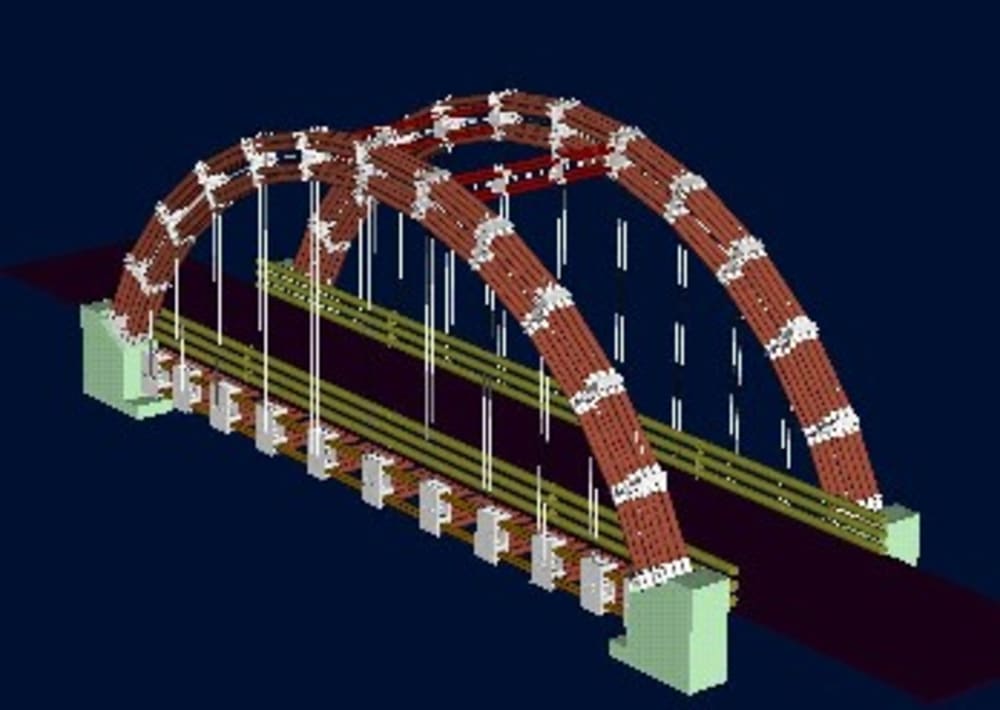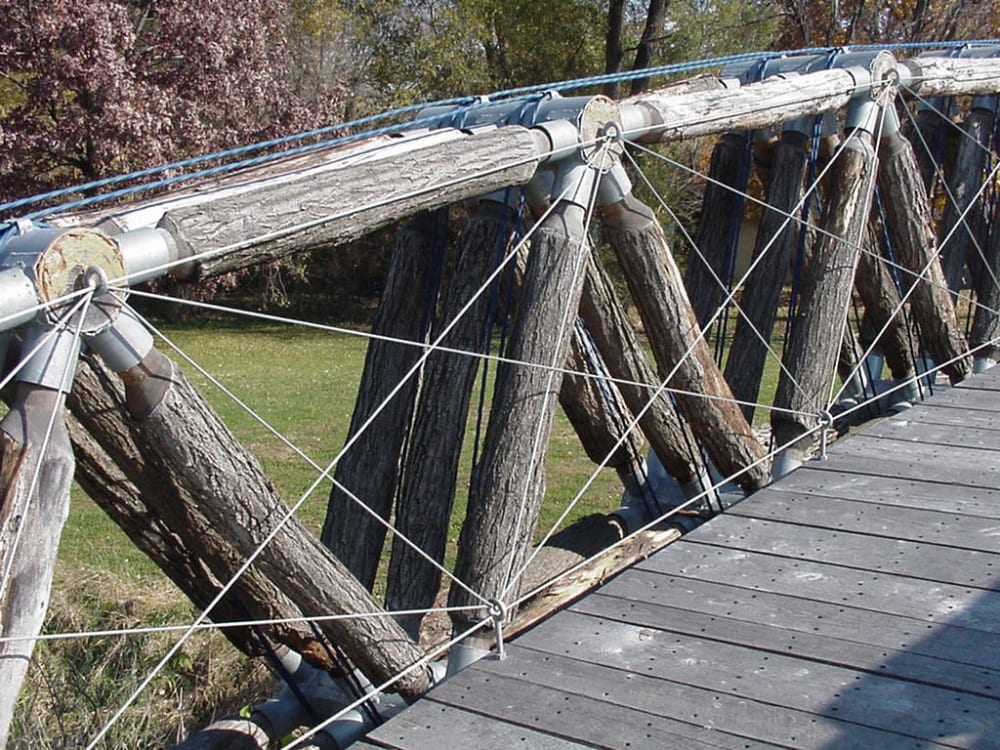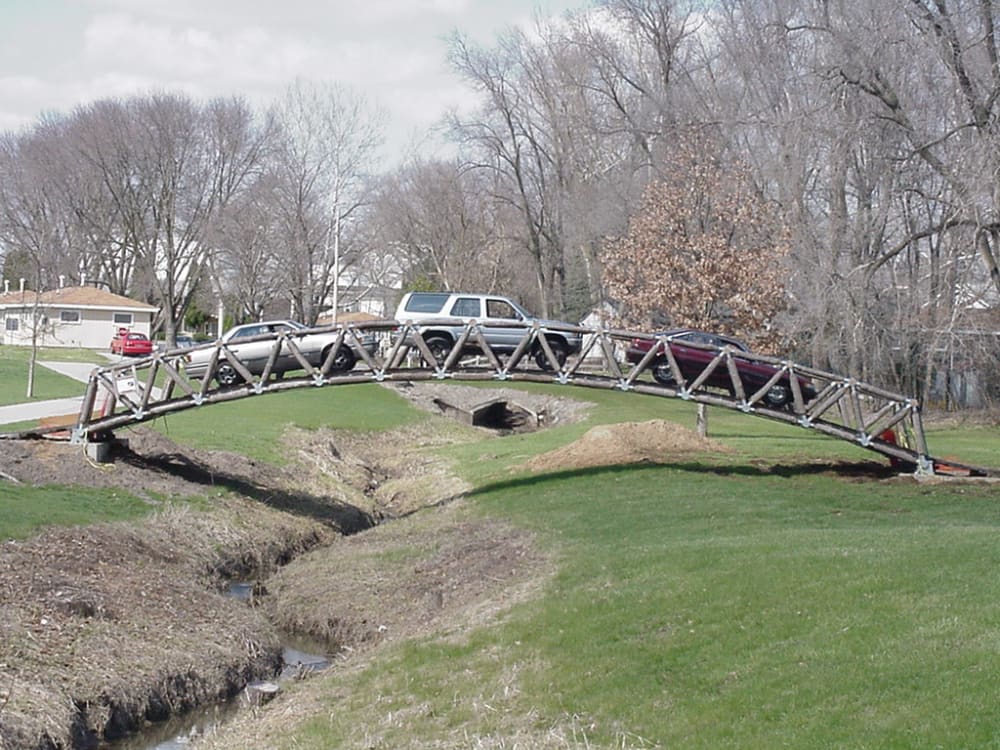
Here is a “green” technology that should revolutionize materials, design and construction methods of highway and other bridges. In addition to considerable savings, it offers the unique inherent capacity to withstand earthquakes, hurricanes and flooding, and the design flexibility to accommodate rises in sea levels due to global warming.
Prevailing bridge building materials are concrete and steel. Both are non-sustainable, heavy, expensive and energy-consuming. An environmentally sustainable, superior alternative is our LPSA (light prestressed segmented arch) engineering system. This reduces bridge building to assembling a kit of compact parts that can be easily manufactured and transported, resulting in considerable cost, energy, and capital investment savings.
A typical structure would consist of nodal connectors which are clusters of thin-wall pipe sockets. Connecting between these nodes are longitudinal members, preferably small diameter timber posts (SDT) - a sustainably vast but currently unmarketable natural resource. SDT ends slide-fit into nodal sockets. A simple tensioning system then compresses the assembly into a rigid, load-bearing structure. Black locust (robinia pseudoacacia) is a hardwood species that is 2-3 times the compressive strength of concrete and is decay-resistant. It is the ultimate “green” bridge material of the future.
By virtue of the connection mechanism, LPSA bridges have a unique structural advantage. It is the ability to dissipate distortion energy harmlessly, offering unrivalled solutions in earthquake-, hurricanes- and flood-prone regions. In a world on the edge of ecological imbalance, the LPSA system demonstrates that sustainability can be a profitable tool for (instead of a burden on) socio-economic development.
In addition to several R&D grants in the UK and the USA, the technology has won a top national invention award in the UK. A pictorial Journal article about recent LPSA bridges, assembled by school children in Iowa, can be accessed at: www.sustainablescience.org/SEIfeb08.pdf. The LPSA development has been undertaken by SustainableScience.org Inc., a non-profit "sustainable science and engineering" R&D charity run by volunteers.
-
Awards
-
 2010 Sustainable Technology Category Winner
2010 Sustainable Technology Category Winner
Like this entry?
-
About the Entrant
- Name:Ibrahim Al-khattat
- Type of entry:individual
- Hardware used for this entry:Rapid prototyping facilitySoftware used for this entry:ProEngineer, ANSYS
- Patent status:patented
















